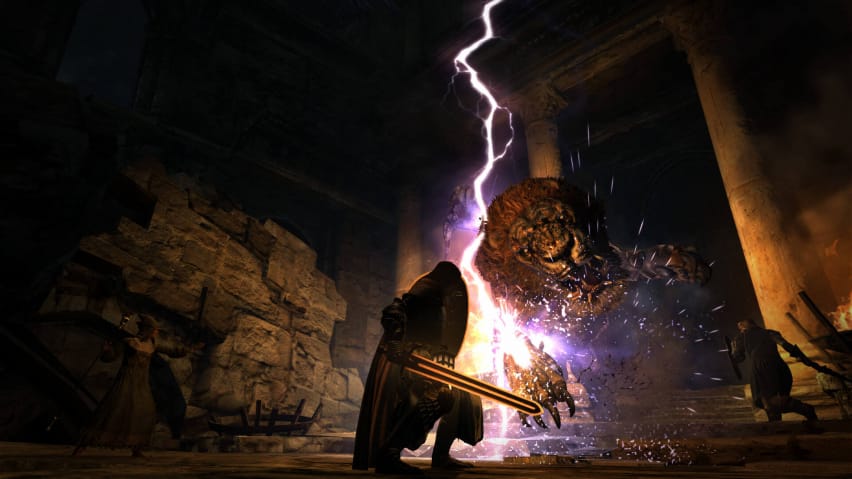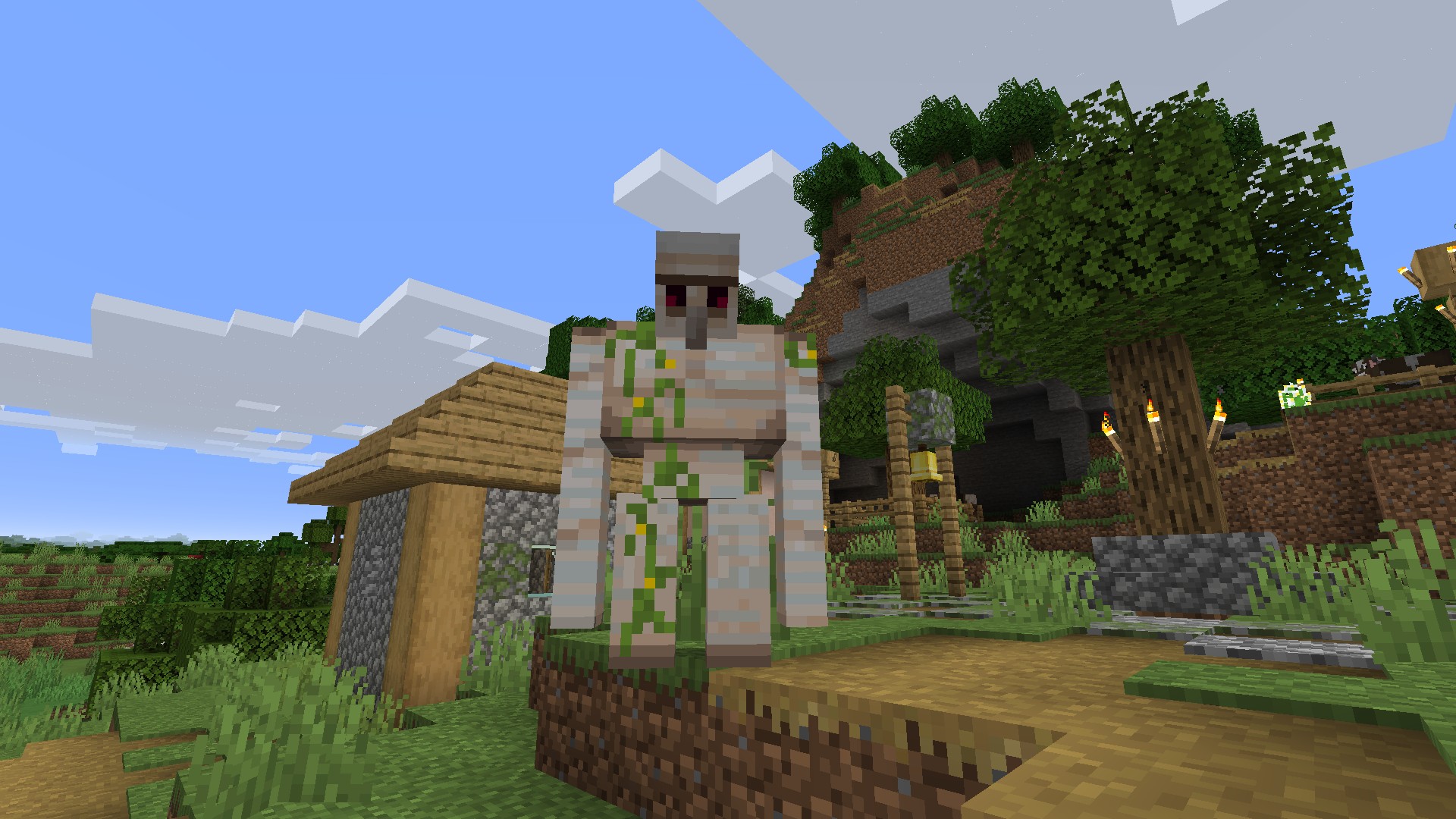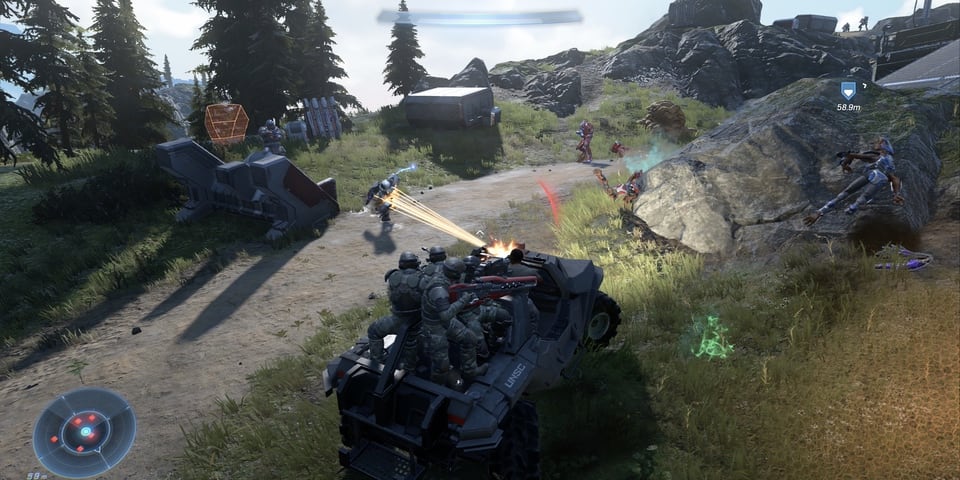
Over a year later than Microsoft and 343 Industries originally planned, Halo Infinite is just a couple of days from release, a return for the iconic first person shooter franchise and a bold step into new territory for Master Chief. With an expanded, more open-world design than ever before, a far less linear structure, and a need to scale from the original Xbox One all the way up to Xbox Series X and high-end PCs, this is also a huge technical challenge for 343 Industries to undertake.
As a flagship first party game, it needs to be leading the way and showing just what all of these systems are capable of. So how does it hold up?
We’ve had advance review code of Halo Infinite to test, courtesy of Microsoft. This isn’t the exact day one build that you’ll have on 8th December, and comes with the proviso that there could be some changes for launch. Still, we’ve got to take this as being representative of the experience that you’ll get on day one.
For our testing, we have an original Xbox One, an Xbox One X which has both quality and performance modes, and an Xbox Series X where we’re able to test the standard 4K 60fps quality mode, though there is also a 120fps mode. Sadly we don’t have an Xbox Series S for testing on this occasion, which would be extremely interesting to see in comparison to the One X.
Halo Infinite is a very interesting game, as 343 Industries tackle open world design for the first time. You have this wider world than you’ve ever seen before here, though it’s nowhere near as plainly open as in Far Cry. Capture FOBs that are held by the Banished, and they become UNSC bases where you can fast travel to, call in vehicles, stock up on weapons, and grab some UNSC buddies to accompany you into battle.
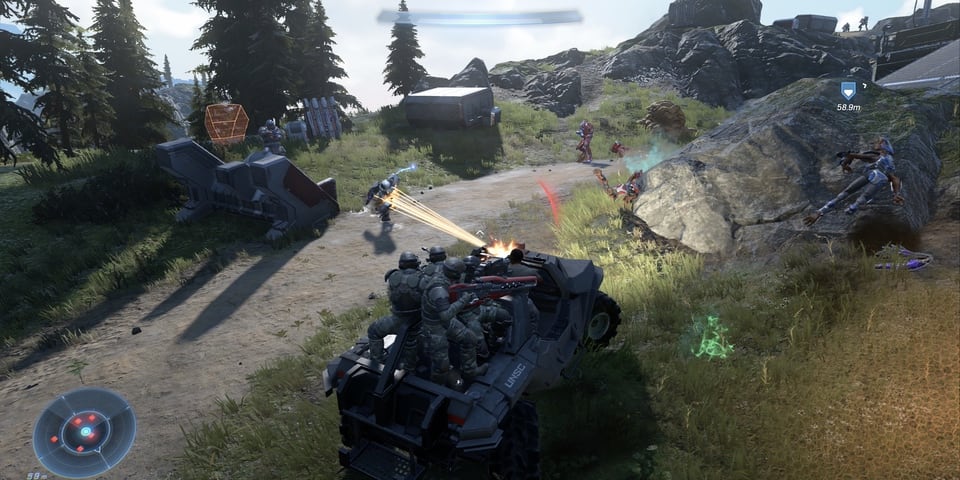
You can also see some of the foundations of co-op play here, even though the game is not shipping with campaign co-op. Loading up the map, upgrades, and more does not pause the game, but allows combat to continue in the background – you can still pause fully with the menu button, though. This set up weirdly also allows you to simply fast travel from the middle of combat.
When it comes to the UNSC soldiers, they’re as likely to die from stray gunfire as ever – I’ve always felt pretty guilty when this happens, but even moreso in Halo Infinite since I’m the one really dragging them into the fight! Having just finished a run through of Halo 3, you might need to lower your expectations of the friendly AI somewhat. It’s not that surprising given the open world, but they will no longer hop in and drive Warthogs, Ghosts or other vehicles anymore, feeling much more like basic cannon fodder because of it.
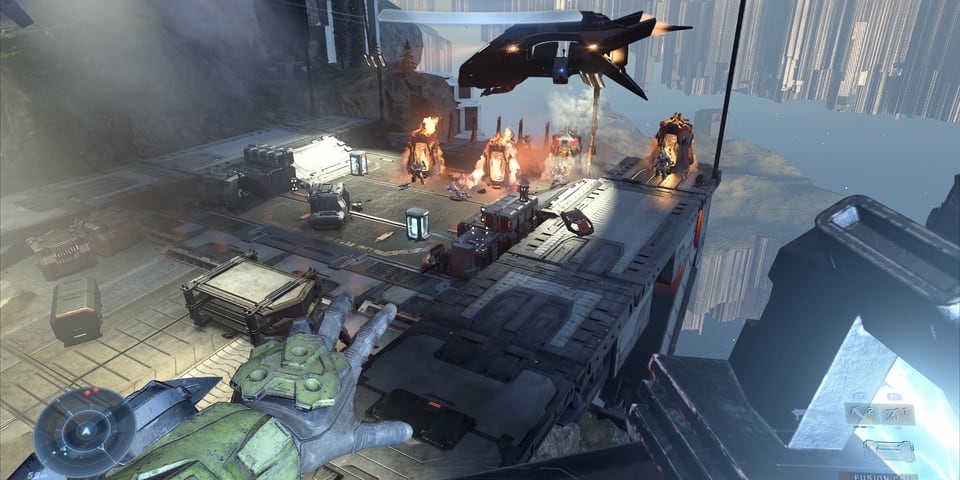
On the other side of the battle, the enemy AI puts up a good challenge even on Normal difficulty, though I’ll be honest and say that’s mostly down to my tendency to leap into the fray and get myself overwhelmed. It’s so easy to do with the new Grappleshot, though rarely advised. What’s significantly different in Halo Infinite is that you can approach a base from any angle, 343 Industries building the world to have secret passages, fallen soldiers with power weapons nearby, and more. You’ll always end up in a big fight and there’s basically no possibility of stealth, but it’s nice to have these options for the open world segments, contrasting with the more directed main missions that take you underground and through more scripted sequences.
The first thing that’s clearly different between consoles is the resolution. Xbox One is the absolute runt of the litter with a lower resolution than even the Xbox One X performance mode. That’s largely to be expected from what we’ve seen over the last few years where the One X is just so, so much more powerful.
Then, comparing the Xbox One X quality mode to the Xbox Series X, and they feel pretty close, the Series X able to roughly speaking take what the One X does at 30fps and push that frame rate up to 60fps. I’m sure there’s some variance here and there in terms of draw distance, the actual resolution with Dynamic Resolution Scaling and more, but that’s the general feel of things.
One thing that we noted from our open world running was that, when there’s an enemy emplacement just out in the open world, the one we’re highlighting here being for an assassination target, all of the barricades, the general detritus and enemies pop in at roughly the same point across all three systems. You might have expected the Series X to be able to stretch these elements further off into the distance, but that’s sadly not the case.
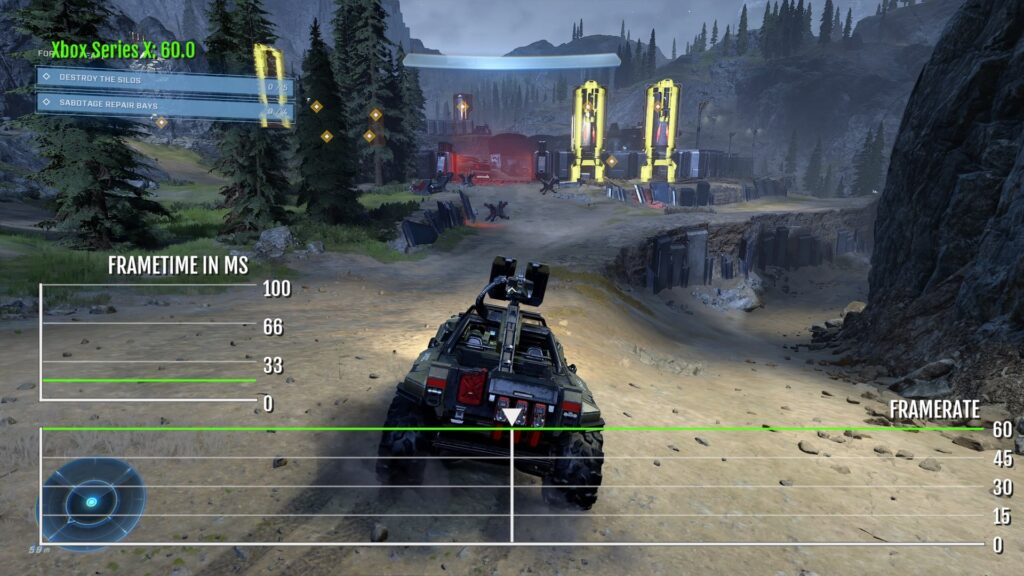
For the frame rate analysis, let’s start with the Xbox Series X. As you’d hope, it’s a nigh on flawless 60fps across the board with just very occasional little single frame blips. If you have this system to play on, Halo Infinite is an absolute joy.
The second best experience, for my money, comes on the Xbox One X with Performance mode. This drops the core resolution range to between 1440p and 1080p to enable the console to shoot for 60fps, and it’s absolutely worth doing so for a more responsive shooter experience. However, that frame rate is not a locked 60 by any meeans. During indoor sections it’s pretty steady, but out in the open world it will vary significantly, often heading down toward 50fps, and on some occasions to the 40s. The game would likely need to be able to drop to below 1080p with DRS in order to sustain 60fps.
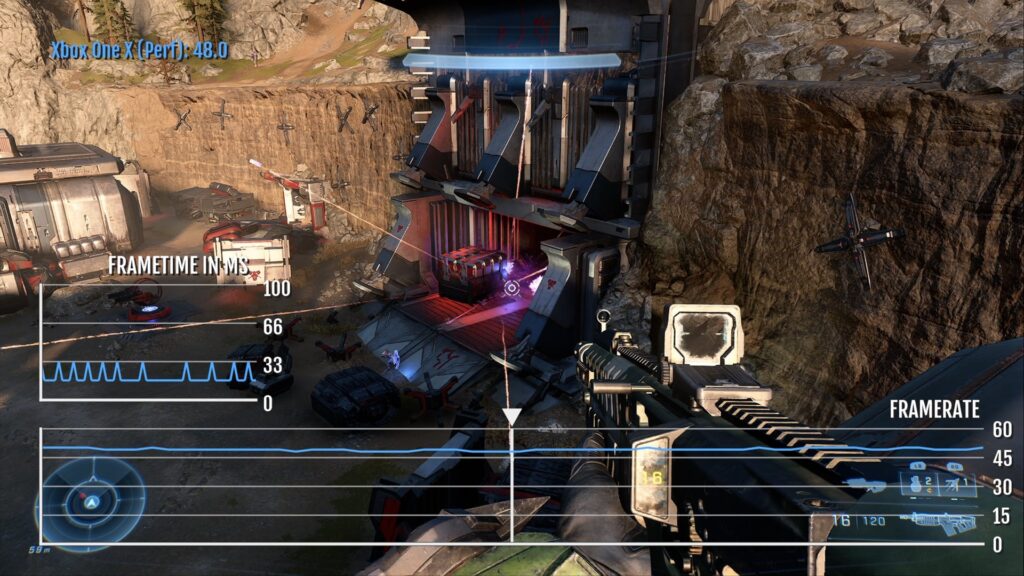
Still, that is preferable to the game on either Xbox One or the One X Quality mode. In both cases, it’s 30fps that is the target, but the frame rate is just a bit unsteady. It’s frame pacing that is the main issue here, and that’s hopefully something that 343 should be able to remedy through updates, though, that being said, this has been an issue with multiplayer as well.
One X Quality mode manages to hover at the 30fps point pretty well, with a DRS window of 2160p to 1440p, however, the base Xbox One has a window from 1080p down to 540p, but that’s just not low enough to stay at 30fps, and certain more intense open world situations will drop down to the mid-20s. We tried the game running from an SSD to see if that might help, but any difference to core gameplay was minimal at best.
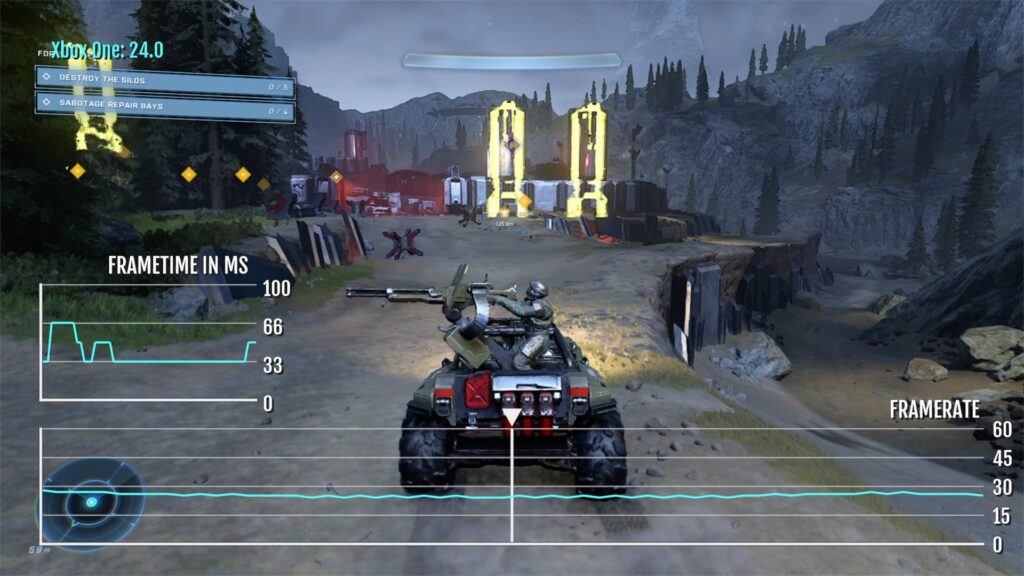
There’s obviously several potential bottlenecks on the now seriously underpowered Xbox One, and it’s a huge tumble from what Halo 5 was able to achieve. Of course Halo 5 targeted 60fps across the board, but the design goals were completely different. The open world design and streaming in of assets, the dynamic lighting and day-night cycle, the larger freeform battle spaces where there’s the potential for more AI enemies and friendlies, it’s all a huge shift from the last Halo game and imposes much greater demands.
Halo Infinite is a game that follows so many of the narratives that we’ve seen play out across the generations and revisions of Xbox console, with the base Xbox One significantly inferior to its much more powerful siblings. Still, the gameplay remains fun and engaging, the game realises a broader and more open world than we’ve ever seen, and… well, it’s Halo! it’s just a Halo that you really want to play on a One X or newer.
